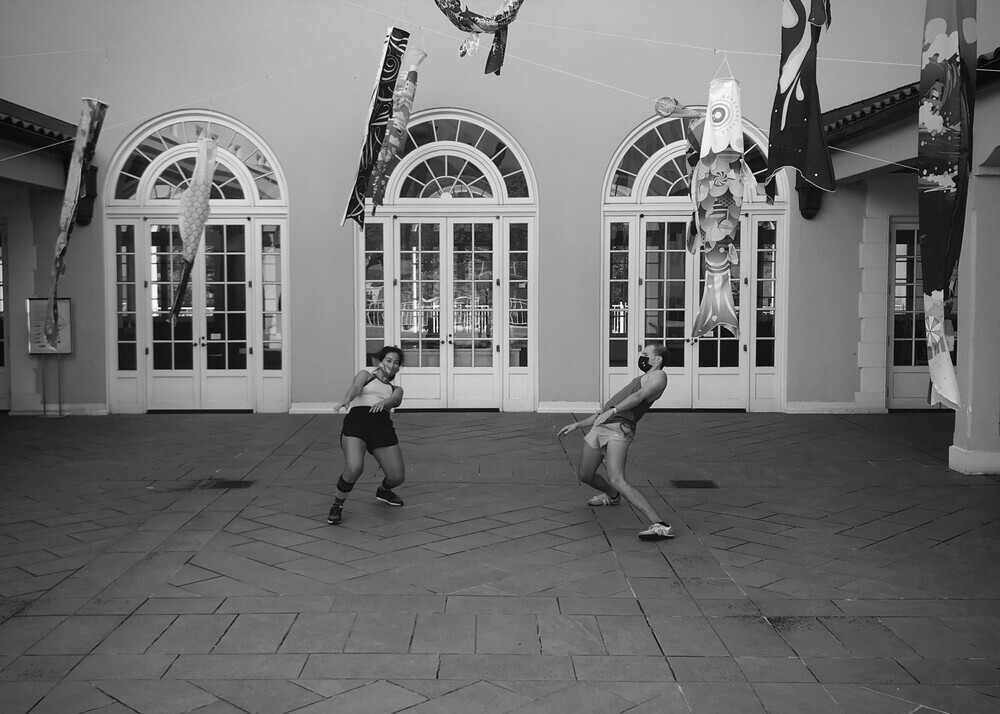
PALIMPSEST
first performed on April 23, 2021
Hawaii State Art Museum (HiSAM) Sculpture Garden, Honolulu, HI
performed 10 times in 2021
E. SPENCER AGOSTON / GRETCHEN JUDE
Gary Higashida, Mika Kimula, Kalikopuanoheaokalani Aiu, Madelyn Biven, Christopher Blasdel, Francis Camuso, June Cecila Chee, Mareva Minerbi
Honolulu, HI / Salt Lake City, UT
341246571g341246571r341246571e341246571t341246571c341246571h341246571e341246571n341246571j341246571u341246571d341246571e341246571@341246571g341246571m341246571a341246571i341246571l341246571.341246571c341246571o341246571m
anemoneanomaly.org/
PALIMPSEST
E. SPENCER AGOSTON / GRETCHEN JUDE
“Palimpsest” was a performance series that layered playfulness, poignancy, and embodied memory, exploring temporality and permanence through improvised dance and music inspired by sculptures. “Palimpsest” also grappled creatively with physical distancing restrictions on live performance during the Covid-19 pandemic.
We are a butoh dancer/sculptor (Spencer) and an experimental/electronic musician (Gretchen). The Hawaii State Art Museum (HiSAM) invited us, as resident artists, to explore the HiSAM Sculpture Garden. “Palimpsest” pragmatically functioned as an open call to dancers and musicians, providing structured improvisation time and allowing performers ten three-hour blocks of time to explore and play in the Sculpture Garden. Museum attendees were free to walk through the space and witness the improvised happenings while respecting the state’s injunction against large gatherings and public performances.
Each sculpture in the garden was placed there at a different time, embodying the museum’s curatorial history along with individual artists’ intent, and superimposing layers upon what came before. We invited dancers and musicians onsite with us each week, to add yet another layer of intent to this art-full space. In “Palimpsest,” the garden became a chance for us to look inward at the layers of memory within ourselves: What habits of thought and motion lie dormant within our bodies? What are our default ways of moving/sounding, of making, of responding—and how do those defaults shift in time and space?
With each additional iteration in this series, we incorporated our own memories of the previous performance, pulling forth what was written into our bodies, and writing over it anew. In its repetitions, “Palimpsest” asked us as performers: What are our former forms? How do new conditions reshape us? What remains unchanged? During our residency explorations, we discovered that each sculpture within the gardens vibrates, activated by the museum’s massive HVAC system. This low sound resonated (with) us, providing a fundamental frequency that ran through the course of the series—symbolized by a ball of red thread that (re)appeared as an object of connection and inspiration.
This was the first opportunity most of us had had to move/sound together in person for over a year and a half.